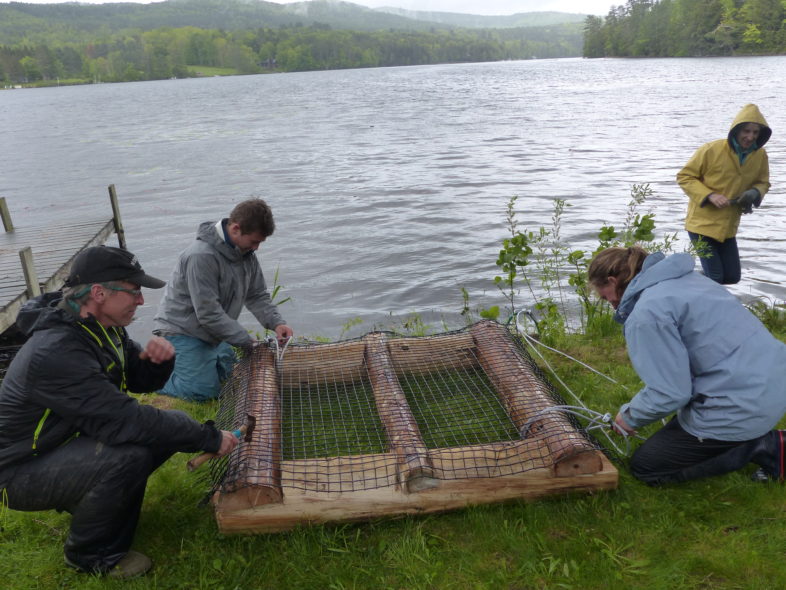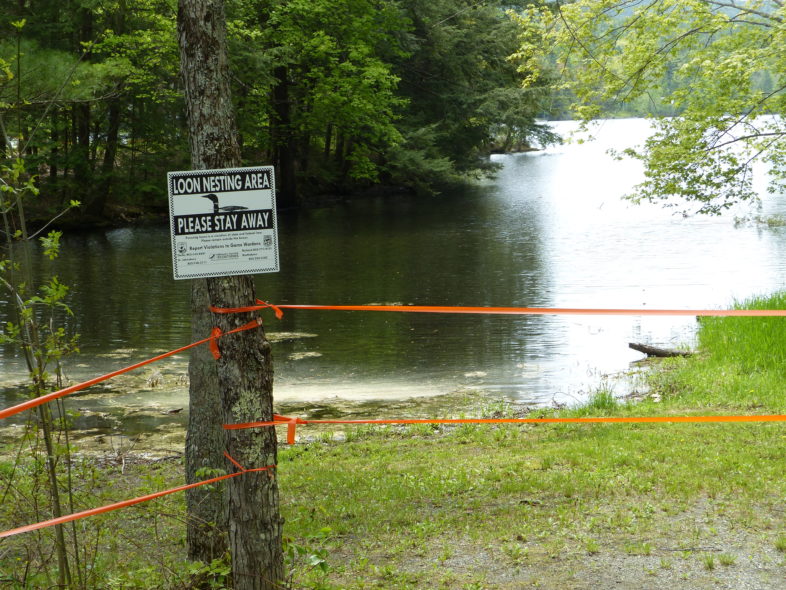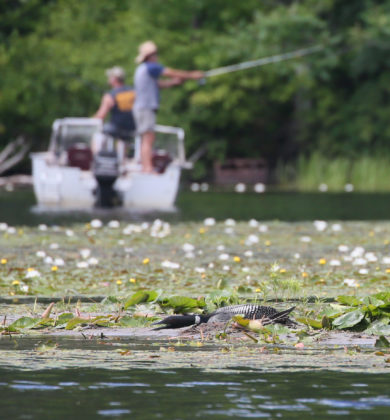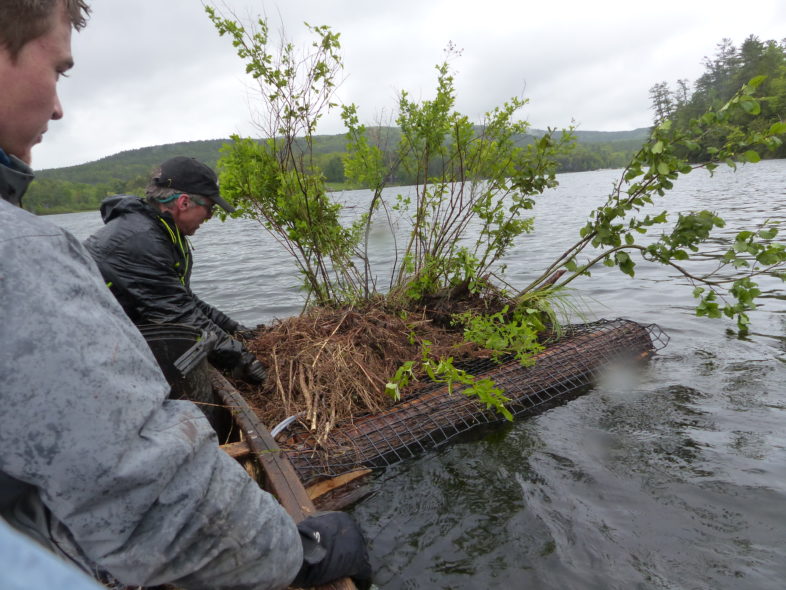For the second consecutive year, Common Loons are nesting on Lake Fairlee. Unfortunately, this year the loons built their nest on Treasure Island, part of Thetford’s town beach and picnic area, just in time for the season opening. In 2016, the loon pair nested on an exposed mudflat just to the north of Treasure Island. But with higher waters this year, the loons chose an alternate site.
Stuart Rogers, a Thetford selectboard member, discovered the nest while cleaning up the picnic area. Knowing that nesting loons are easily disrupted by people on land and from nearby boats, Rogers contacted Eric Hanson, the Vermont Center for Ecostudies (VCE) biologist who coordinates Vermont’s loon conservation efforts. After discussing various options, Rogers met with other select board members and they decided to close the island during the loons’ 28-day incubation period. Hanson placed nest warning signs to help reduce foot and boat traffic around the island.
But despite all the management efforts, during the Memorial Day weekend a raccoon raided the nest. Fortunately, loons will often re-nest following a failed first attempt, and this provided an opportunity to encourage the loons to nest away from Treasure Island.
Hanson decided that placing a floating nest raft in a quieter area of the lake might be better for the loons. Floating nest rafts are often used when appropriate natural sites are lacking or too near human activity for nest success. They are also used on reservoirs, where fluctuating water levels can flood nests. Loons like islands for nesting, and rafts mimic islands.
On Memorial Day, Hanson, accompanied by two VCE interns, and lake residents and VCE volunteers Doug Tifft and Barbara MacAdam built and placed a nest raft in a quieter cove north of Treasure Island. There is no guarantee the loons will nest on it, but it provides another option for them. Local volunteers will monitor and report on the loons’ progress throughout the summer.

Assembling a nesting raft for the loons on Lake Fairlee. From left to right: VCE biologist Eric Hanson, VCE interns Nate Launer and Kirsti Carr, and VCE volunteer and lake resident Barbara MacAdam. / © Doug Tifft
“Even on our busy lakes and ponds in Vermont, loons and people can co-exist with a little help. And thanks to volunteers, town officials, and an aware boating community, that’s happening on Lake Fairlee,” said Hanson.




I am grateful for the thoughtful approach taken by Thetford Selectboard member Stuart Rogers.
Thanks so much for this report. We live on the lake and last year enjoyed following the loon family through the summer. At one point, we thought that the little one was gone but a few days later he/she? was there hitching a ride on one of the parents.
Now with the new dam and an ability to control water level better than before and with the floating nest site, we have a chance of having more loon nesting. Thanks for your hard work.
Mike Fanizzi
West Failree